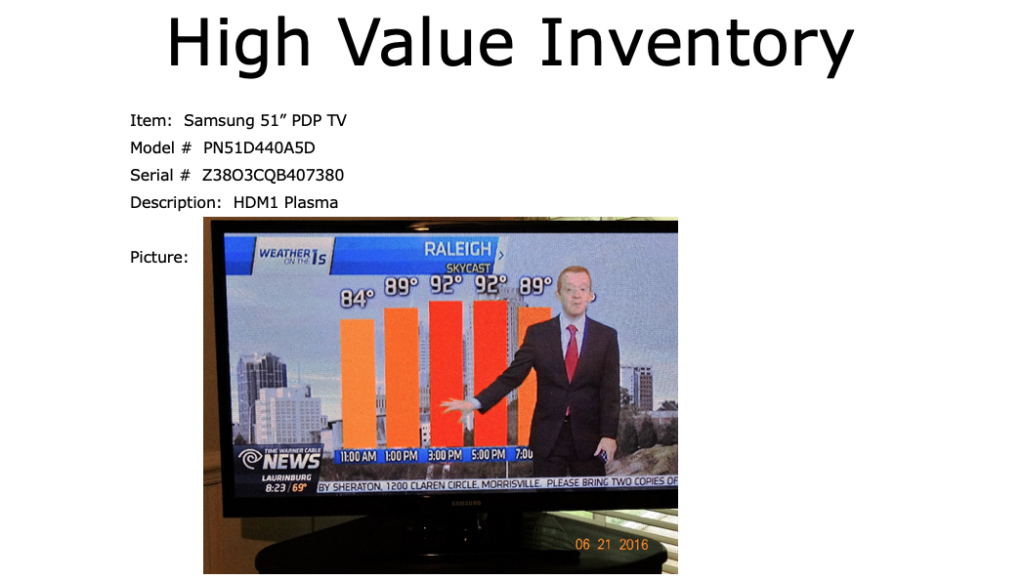“I get a pit in the bottom of my stomach every time I watch my household goods being driven away in the moving truck.”
Military Spouse – Carlisle Barracks, PA
PCS season brings many emotions — happiness of a new adventure, excitement of moving to a new location, sadness of leaving old friends, and the uneasy feeling you get watching your household goods being driven away in a moving truck. We hope to see our household goods in the same condition as when they left, but we all know the reality is that some of our things will get damaged, destroyed or lost.
While it is out of our hands once our household goods are driven away, we can protect ourselves beforehand. This article will discuss how we can protect ourselves and it will also address some upcoming changes to military moves that will better protect us.
How Do We Protect Ourselves?
A few months before your household goods are scheduled to be packed and shipped, walk through your house and identify high valued items and other items unique or precious to you. High valued items and unique/precious items may include electronics, tools, firearms, furniture, jewelry, artwork, etc. When thinking high valued items, don’t worry about what the Transportation Service Providers consider high value that they place on the separate form when preparing the detailed inventory. This list is for you to further protect your things.
Once you complete the initial list, go back and start obtaining detailed information about each item. For example, you have a large flat screen television. Write down the full name of the television, model number, serial number, and a description of the television. Next, take a picture of the television when it is on to show that it is working and fully operating. Ensure the picture has the date on it to show that it is current. This is extremely important, so it is obvious to the Transportation Service Provider that the television was in working order when it left in the moving truck. The picture will also show that the television does not have any preexisting damages. Finally, if you have the original receipt or know what you paid for the television, make note of it.
Now that you have obtained this information, decide where you will document it. I prepared a Microsoft PowerPoint file to capture all the information, but the key is documenting it somewhere on a platform you are comfortable using.
Here is an example of a slide depicting a television and the pertinent information:


Continue obtaining the information for all other items. While this is time consuming the first time you compile the list, remember that for future moves the only thing you will have to update are pictures with the current date and items you obtained since the last move.
Many items you will want to document won’t have as much detailed information as electronics, but it is just as important to document these items as well. For example, if you have a detailed collection of tools, these are extremely valuable and would be costly to replace. Ask yourself, how will the Transportation Service Provider’s inventory list the tools? On one line, it will simply state “various tools.” To protect yourself, prepare a detailed inventory of the tools and take pictures of the drawers that includes the date on the picture. Then, if the event the box containing your tools is lost, you will have the protection you need.
Here is an example of a slide depicting pictures of some of the drawers containing tools:
Documenting and taking pictures of furniture has an added benefit. It shows the condition of the furniture close in time to the move. This protects you when the inventory inaccurately lists six different damages to a piece of furniture that is in excellent condition before the move. The piece of furniture is in excellent condition, and the picture shows this and protects you in the event it gets damaged.
Once you compile the entire document, save it not only on your computer but also save it on a thumb drive or similar device and hand carry it throughout the move. In addition, print copies of everything and give the packet to the Transportation Service Provider employee who will generate the inventory list when they first arrive at your house. The employee will look at the list and see that you are thoroughly prepared for the move, and it will impact how the inventory list is completed. Damages noted on furniture, for example, will be more accurately captured by the employee because he or she knows you have pictures that show the actual current condition. The list will also ensure the inventory is more detailed than “various tools.”
Finally, as mentioned briefly before, while this process will be time consuming the first time you prepare your list, it will only need to be updated with purchases you made since your last move and new pictures taken with the current date for future moves. Protect your household goods and protect yourself before you watch your household goods being driven away in the moving truck.
What are the Upcoming Changes to Military Moves?
As I mentioned, there are some key changes to military moves that will be effective May 15, 2020. These changes offer greater protections to us, to include having more time to file claims and receiving quicker monetary settlements.
We will have 180 days after delivery of our household goods to notify the Transportation Service Provider of damages or lost items. Previously, we only had 75 days to report, so this is extremely beneficial to us. It is still advisable to notify the Transportation Service Provider as quickly as possible, but we won’t feel as rushed as before the change.
When we have damaged items that are repairable, we will now have the option of either having the Transportation Service Provider repair the items or we may choose instead to take the money of the repair estimate instead of the repair. We can then either have the item fixed ourselves or simply keep the money to offset the depreciation of the damaged item.
Transportation Service Providers will be required to settle claims valued at $1,000 or less within thirty days of receipt of notice. The companies previously had sixty days to settle such claims. In addition, all claims exceeding the $1,000 threshold must be settled within sixty days of receipt of notice.
Finally, background checks will be required for all workers who will handle our household goods. This gives us peace-of-mind, and it also should provide a higher quality and reliable experience.
What to Do if You Need Help?
If you need help, contact the closest legal assistance office to schedule an appointment. Use the Armed Forces Legal Assistance website (https://legalassistance.law.af.mil) that I provided in the October blog to locate your nearest legal assistance office.
Remember, the quicker you address the situation, the better likelihood that you will quickly and successfully resolve it.
Future Blogs
Be on the lookout for future blogs that will continue to discuss specific legal issues often encountered by servicemembers and military spouses. As always, this blog series will help to protect your family and you!
* Kerry L. Erisman is a military spouse, Dad of two awesome teenage boys, Army retiree after 28 years of active duty service, attorney, and Associate Professor with American Military University. He writes and teaches on important military spouse issues including leadership, critical thinking, and education. This blog is the sixth in a monthly series designed to inform military spouses of timely legal issues that may affect them and where to turn for assistance.

